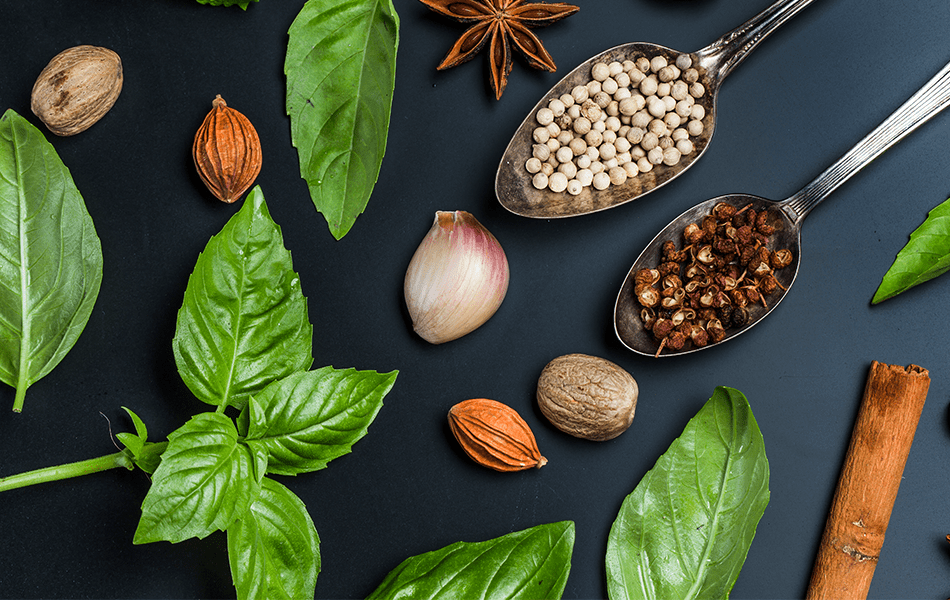To choose the appropriate container for indoor herbs, evaluate the material type and size, but also how far the herbs may spread out. Indoor herbs should be kept in terracotta, ceramic or plastic pots. Plants of culinary herbs or indoor herbs prefer that prefer soil dry do well in terracotta pots, whereas indoor herb plants or herbs prefer that prefer moist soil do well in plastic herb pots.
Narrow pots are ideal for small herb, plants perennial and other herbs with short root systems, whereas deep pots are ideal for herbs with lengthy taproots. Knowing the features of your herbs allows you to choose the best flexible container for them. Every herb grows differently in several pots indoors, and this also reveals how healthy the one growing herbs in several pot indoors will become.
Use a plastic, rubber, or metal saucer rather than a clay one since clay allows moisture to seep through. Clay pots aid in drainage yet they can rapidly dry up. Use a glazed or plastic container instead of clay pots if you live in a dry climate or are growing herbs indoors in the winter when furnace heat makes homes particularly dry. These materials won’t dry up as rapidly as clay herb pots.
1. Grow Each Herb in a Separate Pot
Herbs to grow them in separate pots or groupings in separate pots so you can manage their watering needs. For planting herbs for example, while basil likes a soil slightly moist in soil, oregano and rosemary like soil dry. By planting herbs in different pots, you can manage the watering needs of each. It might be more difficult to produce the ideal habitat and grow light for several herbs in a same container if you don’t have the ideal circumstances.
When growing herbs indoors, the most flexibility is provided by planting fresh herbs in different pots. In order to enhance air circulation or modify the quantity of natural light they receive, you might need to rotate the herbs you cultivate growing indoors often. If you forget to water a herb, it could be attacked by fruit flies or another indoor garden insect, in which case it has to be soaked in the sink.
This enables you to learn how to cultivate herbs inside and cater to the specific requirements new growth of each plant. Culinary herbs work perfectly temporarily in those adorable small multi-herb pots you can get at the grocery store or garden center. Yet, if you want to cultivate fresh herbs successfully inside over the next few weeks or long term, you might think about giving each plant its own containers.
2. Select a Container With Drainage Holes
Pot drainage holes assist the excess water flowing out of the pot indoors. Without drainage, indoor plants may succumb due to oxygen-poor environments. Some pots come with a plug-on drainage hole to prevent unnecessary leaking.
But some containers don’t have drainage hole, and it’s fine if it’s the perfect container for your plant. That is because you can always carefully drill a hole for drainage on the bottom. Additionally, you can also place trays in your container.
A saucer is a disc placed in own container under the container to catch the excess drained water. Mostly, they are shallow, and you can buy them separately or even come together with the container itself.
Hence, for many herbs it’s best to have a saucer beneath the plant containers to prevent spillage. However, you must empty the saucer plate after watering the herbs. But before doing so, let the water seep into the garden soil for the plant roots to absorb and drain out a little.
3. Which Herbs Can I Grow?
Kitchen herbs to grow at home are basil, mint family oregano, mint family, chives, sage, rosemary, and thyme are the easiest herbs to grow indoors, whether you have them in the garden already or wish to plant them in the indoor garden now. Many herbs can add up best flavor to many dishes that need best herbs and it makes it healtheir.
Rosemary, thyme, and oregano, which are more tropical or semi-tropical than most herbs are, grow nicely in a mixture of standard potting soil and cactus mix. Before watering, allow the soil to somewhat dry out.
Regular potting soil is well for growing other herbs indoors. Never allow the regular potting soil to get damp. Use a liquid houseplant fertilizer once or twice a month to fertilize herb plants.
A kitchen garden may be utilized to grow herbs indoors and also show how to grow herbs indoors such as oregano and parsley, which can enhance the flavor of soups, salads vegetable dishes, and fresh sauces. Tabbouleh, pesto, stuffing, chicken, fish, and vegetable dishes all require it.
Perennial herbs like rosemary, Greek oregano, and thyme are all fresh herbs best grown from young plants that you purchase at a garden center. Parsley or rosemary may be cultivated in a deep container with rich organic potting soil and collected from individual leaves. The earthy scent of a few crushed rosemary leaves may take you to warmer locales on a chilly, winter day.
You can start parsley from seeds, though it will take a few weeks before you see any results. Parsley likes to sunbathe in enough light and warmth. Ideally, to grow herbs indoors, harvest the outer leaves of most herbs first to encourage new growth from the center and keep the plant buoyant.
Most herbs plants can be started from cuttings, too. For instance, basil and mint are easy to root in a glass of water. Some herbs, such as basil, cilantro, and chervil, are best started from seed and replanted throughout the garden centers
4. Choose the Sunniest Spot
The most of herbs demand lots of light. In order place plants used for growing herbs in your indoor herb garden to flourish, you’ll need to provide it with at least six hours of direct sunlight in each day.
Place bright light plants in as close to your brightest window as you can for the best exposure—the brilliant light coming in from a south-facing window is ideal place plants. They are bright light plants won and grow lights can’t provide enough light if you place them in the middle of the room or close to a window with a northern exposure.
In the winter, when there is less natural light, growth of young plants could be slower. While you wait for the bright light of spring to arrive, think about making a grow light or LED light purchase.
5. Temperature should be between 60-70 degree
Begin an to grow indoor herb garden, e ven a few pots of most herbs grow on a sunny windowsill, or under lighting system grow herbs may provide you with delicious tastes all year. Just make sure you choose the proper herbs for growing indoors in the winter. Many indoor to grow herbs to grow indoors love the same temperatures as most people do, which is approximately 65 to 70 degrees F. We enjoy fresh basil, rosemary, and oregano because they bring flavor to dishes and a wonderful aroma to the kitchen.
Indoor herbs may be grown indoors year-round, including in the winter. They choose temperatures that are typically between 65 and 70 °F, the same temperatures as most humans. Even though the temperature near a top window sill may drop to 55–60°F at night, most plants like it. As basil can be more difficult, kitchen herb garden should have drainage holes. Most other herbs grown in may be also grown indoors at any time of year, but many cooks of indoor herbs prefer to cultivate them during the winter when it’s too chilly or soil slightly moist to dig in the ground.
6. Provide Strong Light For Your Indoor Herb Garden
It’s good to give your growing herbs indoors time to acclimatize to their new digs. Ease them through their transition by keeping them in indirect light for a couple of weeks. Afterward, a bright sunny window is a small herb that’s best friend: place indoor plants in south facing window or west facing windows where direct sunlight exposure is ideal. If they’re not receiving at least four hours of sun each day, using grow lights or natural light can come in handy.
7. Check for pests if buy small plants for indoors
It’s essential to look for pests when purchasing small herbs or plant food, particularly aphids and spider mites or fine webs between the leaves. You may also utilize small herbs or plant food that you’ve dug up from small plants dug your garden. Any small plants dug from kitchen garden or herb garden that you are digging up to bring indoors should be trimmed. They could experience some shock and need some time to recover before they can begin to regrow.
Inspect the plants for pests before buying them or bringing them inside from the garden. Scale, spider mites, and aphids are frequently seen on plants. It’s better to start with a pest-free plant, but if you detect these pests, you may wash them off for a while with lukewarm, soapy water. Don’t overload the plants to prevent issues. Make an effort to keep each one well-ventilated. The majority of herbs will flourish in a grow light if you don’t have a very sunny window or windowsill.
8. An Infrequent, Slow Thorough Watering is Best for herbs grow
Indoor herb plants should not be watered in a hurried manner since the water might quickly travel through the soil without reaching the plant roots first. So be careful, take your time, and be sure to thoroughly soak them. Generally 2-3 times a week is plenty. If plants in an indoor herb garden do require daily watering, the container can be too tiny or your home’s humidity level might be too low. It is beneficial for the herb to allow part of the soil to dry out between waterings, but not all of it.
9. Provide Good Air Circulation
Grow herbs indoors by having a humidifier, you may raise the temperature of your own herb garden, and by avoiding touching the windows during the chilly winter months, you can keep perennial herbs in your indoor herb gardens growing. Make sure your indoor herb garden soil and plants’ leaves don’t contact the windows. Basil is particularly sensitive to chilly temperatures, but the majority of herbs don’t mind if the temperature in your home dips into the 50s at night.





